
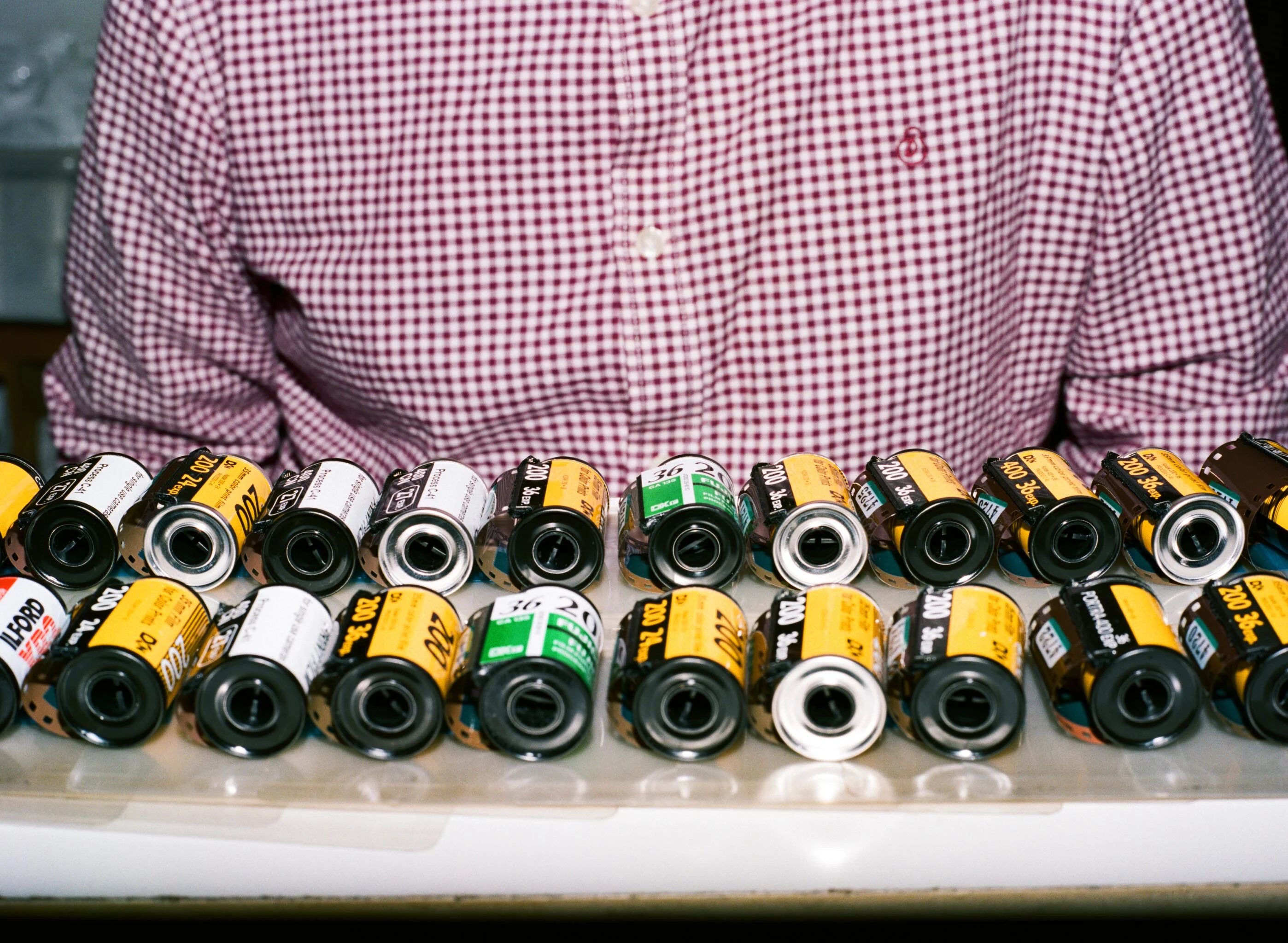
Since Eye Culture first opened its doors in 2005, the East London photo lab has become a hub for practitioners of all stripes, where tips are traded, friendships are formed, and ambitions are encouraged. Presiding over the shop is its formidable founder, Mohiuddin Siddique. Now in his seventies, he speaks to Michael Segalov about his life in photography.
Photos by Nina Manandhar.
It’s barely 11am on a spring Saturday morning, but at Eye Culture, a steady stream of customers has already started to form. Since opening its doors in 2005, the Bethnal Green photography lab has become a local institution—a place photographers of all stripes and stages flock to, confident their film will be handled skillfully and with care.
Today is no exception: a group of young girls waits patiently to drop off a single disposable camera from last night’s birthday party; while fashion photographer Alex Robson has a bag of rolls that urgently need developing from a shoot for a Los Angeles sneaker brand campaign.
Sandwiched between a post office and a sheepskin-clothing distributor, Eye Culture sits only a stone’s throw from Shoreditch—once a hub for independent culture, immigrant communities and independent businesses; now known for its swanky media agencies, smart hotels and private members clubs. However, for all the gentrification this corner of the city has experienced since the 1990s, Bethnal Green remains an area where communities meet and co-exist. Gourmet eateries operate alongside traditional Bangladeshi restaurants and old-school greasy spoons; and on weekends, clubbers flock to the old working men’s club to be entertained by queer performers.
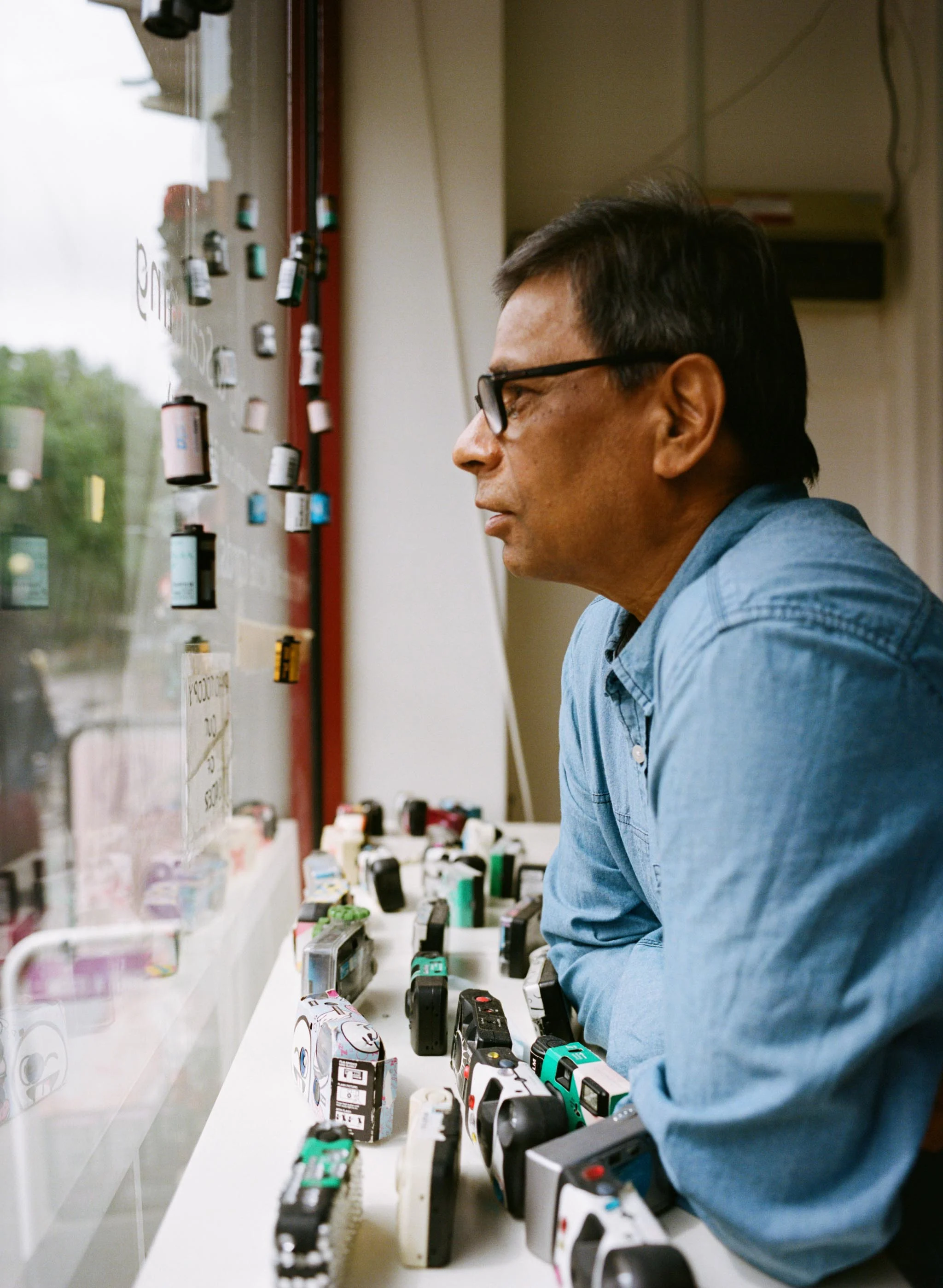
Eye Culture—its unassuming window piled high with disposable cameras—is very much a part of this cultural convergence. Peer in, and you’ll see a selection of films ready for sale, along with baskets of negatives, boxes of chemicals and stashes of stationery. Occasionally, the rumble of a train speeding through London’s underground tunnels below shakes the store. And then there’s the hum of the aging machinery that takes pride of place in the compact shop. Keeping a watchful eye is Mohiuddin Siddique, Eye Culture’s founder and owner. During its busiest periods, he can oversee 250 films being processed and developed in a single day.
When Siddique set up shop in the area—home to the UK’s largest concentration of Bangladeshis—he had little idea that his customer base would one day consist mostly of the young creatives who’ve since made this part of the city their hub. Today he employs a small team to support the store’s operations, but for many years it was very much a family affair.
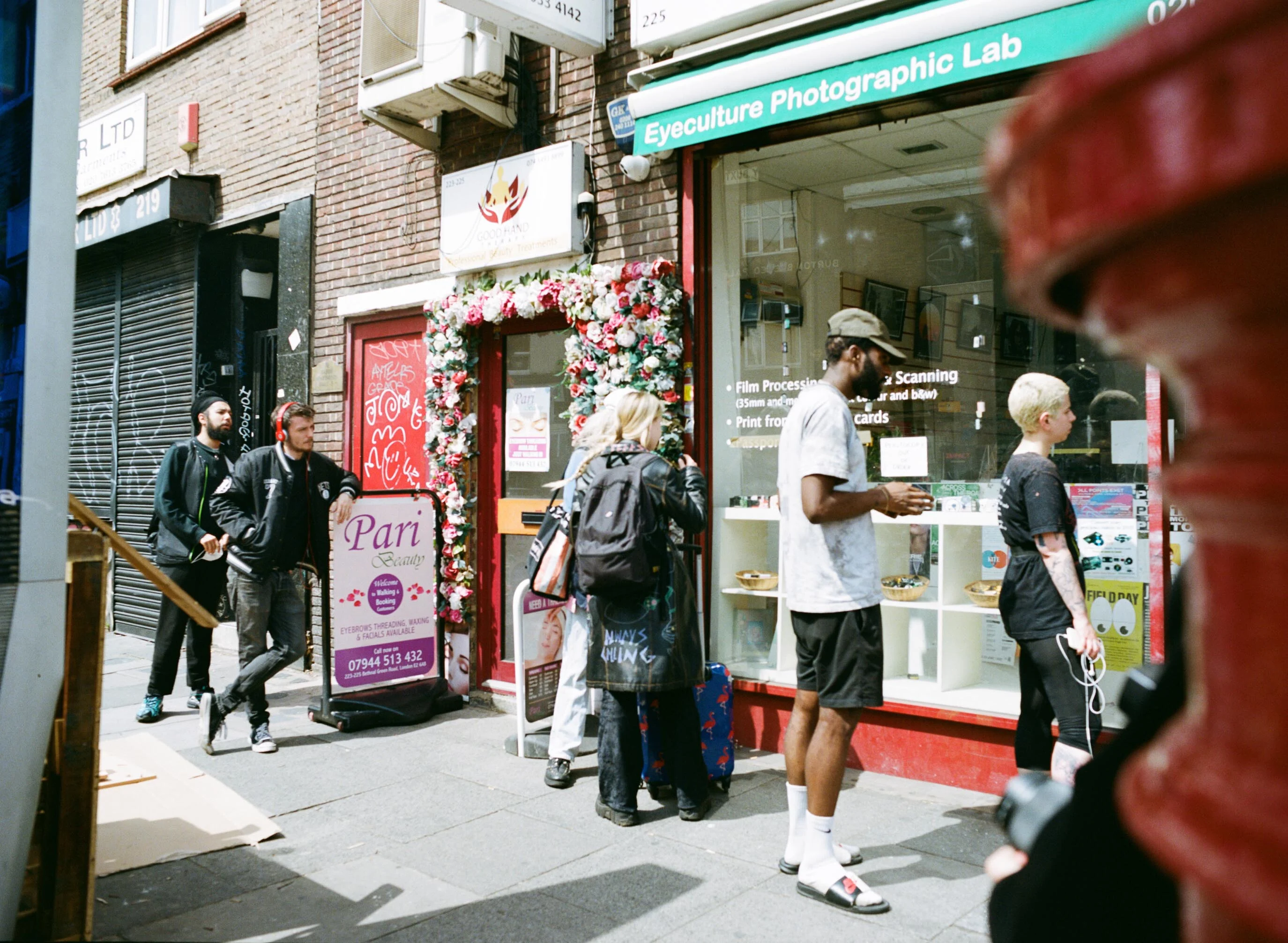
Siddique was born in Pabna in 1954. Today, it’s a small city in western Bangladesh, but for most of his youth—before the nation’s bloody war of independence—it was part of the province of East Pakistan.
He was just 12 years old when he became the proud owner of his first camera: a plastic Lomography Diana (a gift from his parents) not dissimilar to the modernized edition in production today. Throughout those early years, Siddique remembers taking photographs of nature—sunrise and sunset, vegetation and flowers. Whether in lessons or on the football pitch, photography was always on his mind. It was a sore point that his older brother had higher spec equipment. As Siddique grew older, he was allowed to borrow that, too.
“I studied commerce after finishing school,” Siddique recalls, “but it was never hugely interesting to me. And then in March 1971, my studies were interrupted by the revolution, when education infrastructure was destroyed.”
For nine months, fierce fighting spread across the country. The population of Bangladesh would pay a terrible price for its independence from Pakistan, but finally, on December 16 1971, Pakistani forces surrendered. As the dust settled, a teenage Siddique set about finding his bearings once more.

“Then one day, in 1972,” he says, “I saw an advert in a local newspaper for a basic photography course.” In the aftermath of death and destruction, he was determined to pursue his passion. He signed up for the evening classes, no time to waste.
The course was offered at the BegArt Institute of Photography, named after its tutor M.A. Beg. “There were 10 or 12 students, and he’d teach us from his small room,” Siddique says. For three months, he immersed himself in the curriculum, learning about composition, aperture and exposure; and how to process his films.
In 1976, Siddique packed a bag and made the 5,000-mile journey to Paris to join a younger brother. What started out as a brief visit would see him living in the French capital for 22 years. He started a new life, finding work in the screen-printing business. All the while, his love of photography persisted.
“Whatever money I had spare,” he explains, “I’d spend on photography. I’d spend hours wandering around the city taking pictures of street scenes. I took a course in portraiture as well.”


Siddique returned to Bangladesh to marry his wife, Nasrin, in 1990. Joining him in Paris, she came to understand the depth of his dedication to his craft, and eventually encouraged him to pursue photography professionally.
“That’s why we moved to London at the end of 1999,” Siddique says. “I was in my mid-40s. It was now or never, and we thought there’d be more possibilities to make it professionally in the UK.”
Settling in East London, Siddique got to work finding his feet in the industry. He started out in wedding photography before diversifying into other fields. There was photojournalism for local papers, event photography for Asian magazines, and shoots for fashion brands. “After years of dreaming of being a photographer,” he says, smiling, “it was finally happening.”
Much to his frustration, Siddique found the quality of the prints he was being given didn’t meet his high standards. “When it comes to the quality of a picture, the result is only half in the hands of the photographer. The rest is down to the processing, and I wasn’t getting good results.”

A good lab, Siddique was certain, could make the world of difference. Why not, he thought, set up one of his own? So in April 2005—with the help of a loan from a fellow film-enthusiast, an extended overdraft, and leased machinery—he opened the doors to Eye Culture’s first home on Fashion Street, nestled between bustling Brick Lane and Old Spitalfields Market in East London.
“It wasn’t easy,” Siddique says. “Lots of people suggested I do something with quicker returns, like open a chicken shop.” But he knew that wasn’t the path for him. “You have to do what you love, or else what’s the point?”
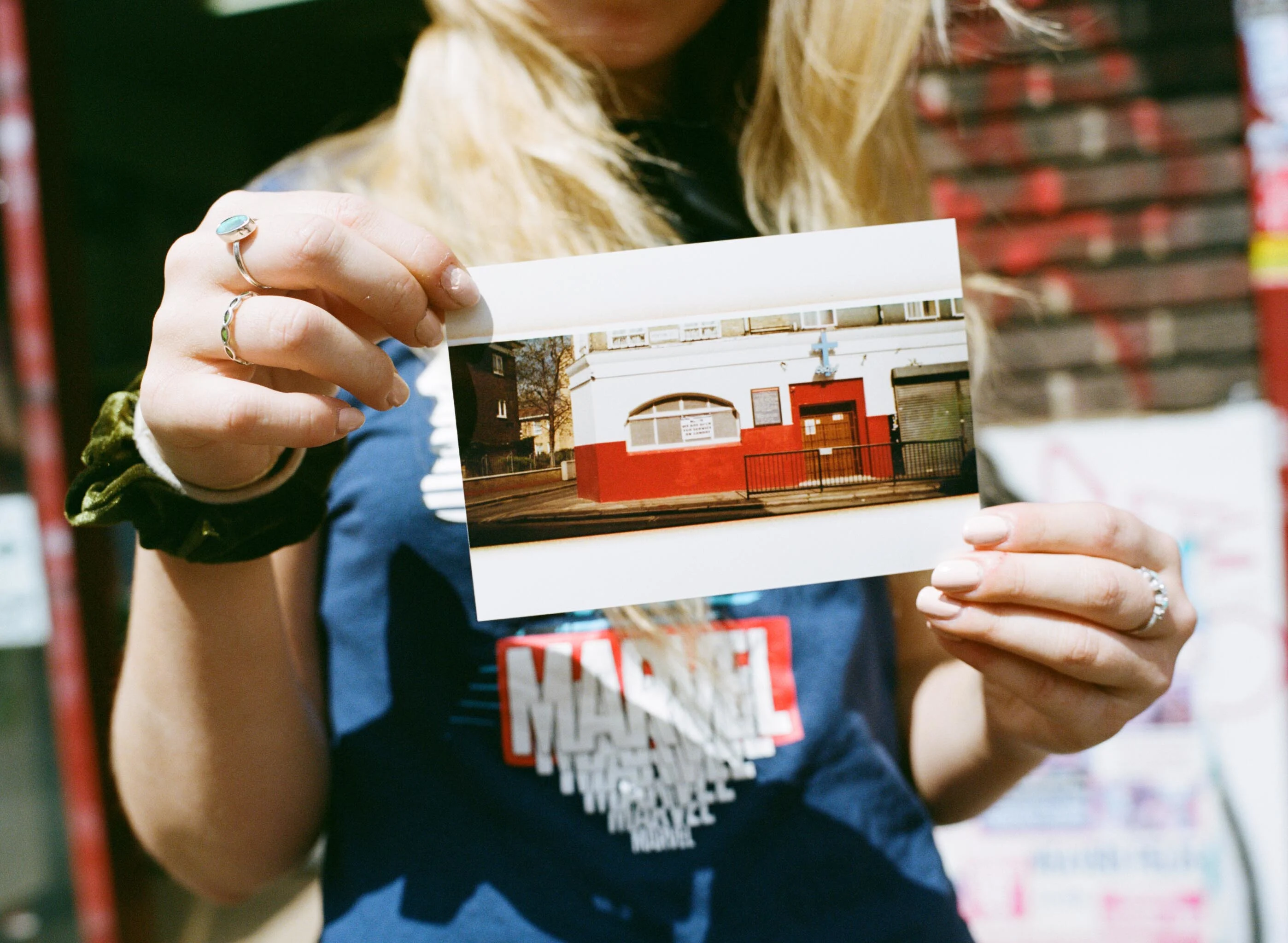
What Siddique does in store today, he says, remains exactly the same as when Eye Culture first opened. During a brief break from the flow of customers, he guides me through the intricate process he knows so well.
Once a customer drops off a film and the relevant details are taken, it’s put through the shop’s single Noritsu QSF-V50 film processor. On a small screen, we watch as the film weaves its way through the channels inside. The roll passes through a series of substances—color developer, bleach, stabilizer—before, 12 minutes later, it reappears.
“It comes out processed,” says Siddique, “and we wind it around our hands; we’re careful not to touch the negatives with our fingers, in case they get marked or smudged.”
“Once finished here,” he continues, “the negatives are taken to one of two identical stations for scanning and printing, depending on what the customer has asked for.”
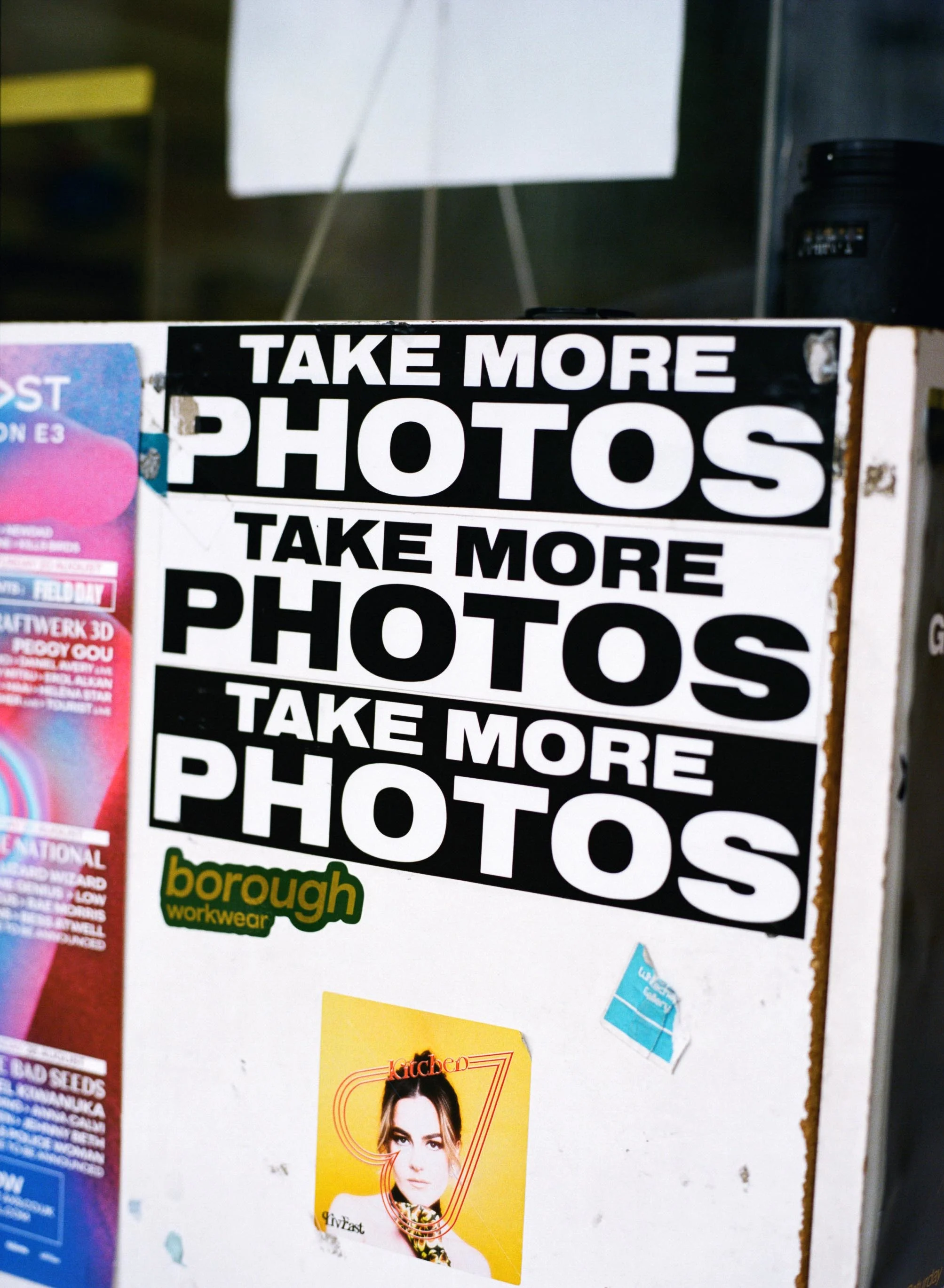
I find myself exposed to all different styles of and approaches to photography. It’s what I love most: I can learn from others, and apply it to my own work.
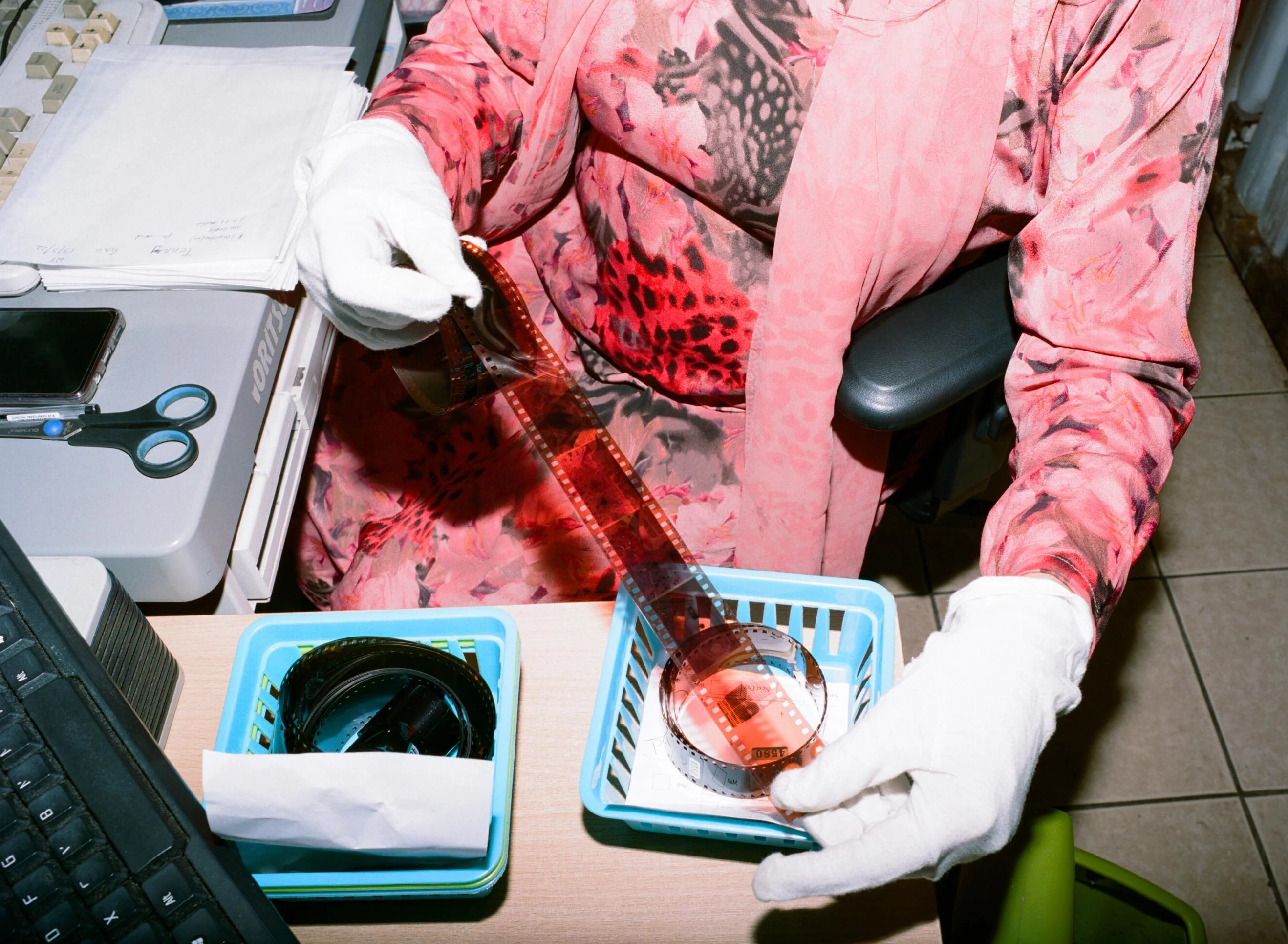
After the negatives have been cleaned with a small brush to ensure picture-perfect results, they’re imported into a computer, then examined individually. “We check every image as it comes in, as sometimes the negative might scan in incorrectly,” explains Mohammad, an Eye Culture employee.
Although his encounter with each photograph might only be fleeting, Siddique has collected decades’ worth of insight into his customers’ lives. This morning, the shop has already processed a drunken bowling bash, an all-American road trip, and a university graduation. The second or so that each image sits on the computer screen is enough time to momentarily imagine another world.
“I see all sorts,” he says, taking a seat at the back of the shop. “But whatever is there doesn’t affect us. It’s photography. I’ve seen tens of thousands of snapshots: different people, places, lifestyles.”
Sometimes, Siddique says, a customer will notify him that a film contains explicit content. In that case, “I’ll say no thank you, and suggest they take their film elsewhere.” When he’s not given prior warning, Siddique is unimpressed.

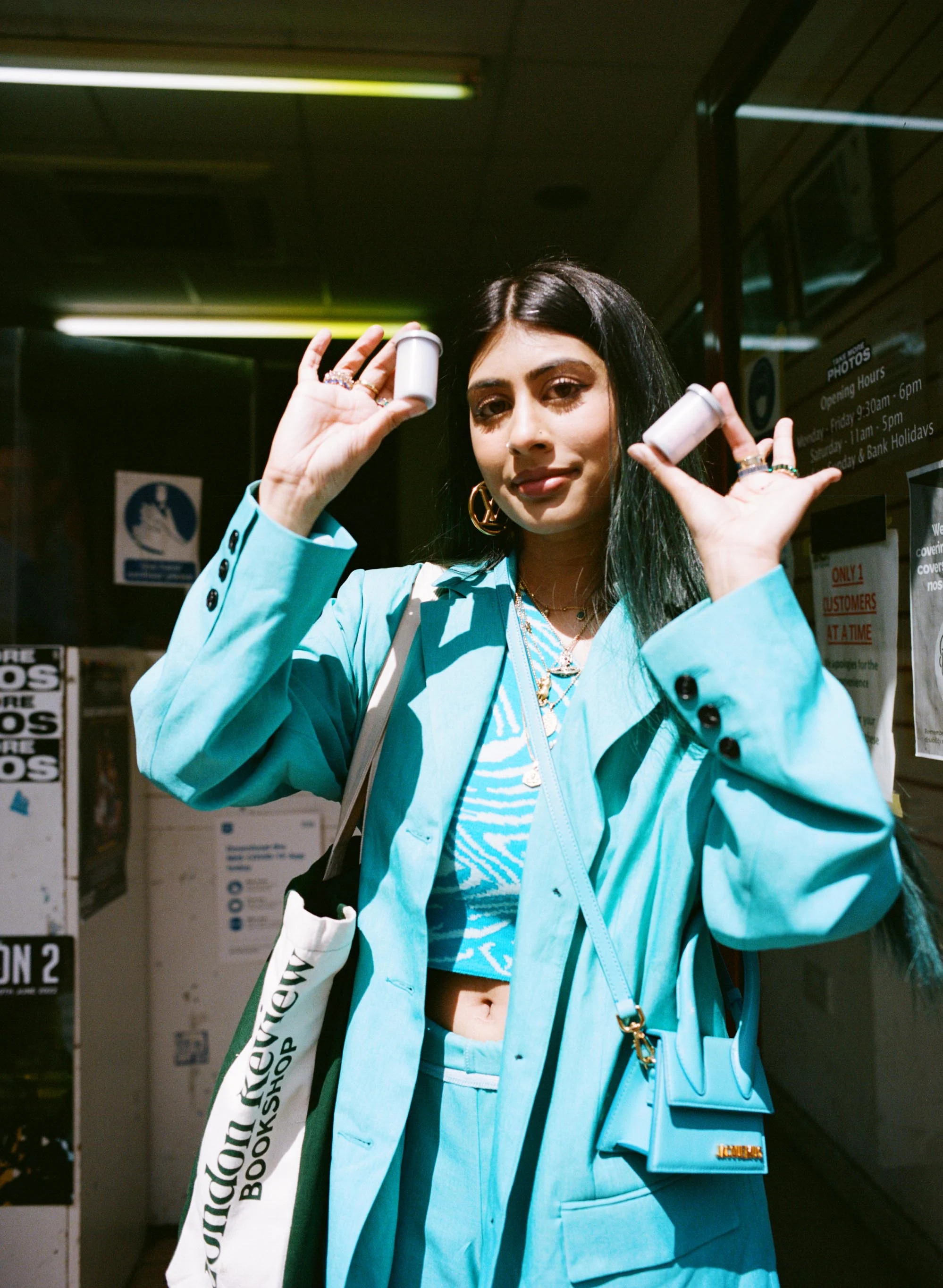
“Mostly,” he says, “I find myself exposed to all different styles of and approaches to photography. It’s what I love most: I can learn from others, and apply it to my own work.”
Once the film processing is completed, an email transfer is sent with a simple message from Eye Culture: “Thank you for supporting us during this difficult period and I hope you will continue to this year.”
Today, many customers opt only to receive their picture digitally. And just 10 percent, Siddique says, collect their negative strips. He struggles to understand why.
“The negatives,” he says, “are more important than the picture or the digital file. You might lose the pictures. Digital files change every few years; the negatives can last for a lifetime.” He grins for a moment. “Maybe that’s just my age.”

Digital files change every few years; the negatives can last for a lifetime.
Launching any commercial venture is a risky business. But opening a film-processing and printing spot just as digital cameras reached the mass market, and without a penny to spend on marketing? It required patience, graft, and guts.
It took Siddique over two and a half years to break even from Eye Culture’s initial investment. And at first, business was slow. “Our shop was fairly quiet,” he explains. “Often, we’d only do a few rolls of film in a day.”
Slowly but surely, however, word of the shop got around. Siddique credits this in part to one of his earliest and most frequent customers: Ben Rayner.
Today, Rayner is a commercial and editorial photographer based in New York, shooting for Apple, Adidas, Vogue, and other clients. But in 2007, when a friend first tipped him off to Eye Culture, he was just a 22-year-old in London, cutting his teeth on low-paying projects for the likes of VICE and Dazed & Confused.
“Siddique was always helping out, working to my tight deadlines if I had them…He took so much care with everything. Whatever was wrong, he’d fix it,” Rayner recalls from his home in Brooklyn. “I started telling everyone, and soon enough word got around.” From then on, Eye Culture became a hub for London’s young creative community.

Rayner is in no doubt that what Siddique offered changed the course of his career. “The fact Eye Culture was so affordable compared to every other lab is probably one of the reasons I kept doing photography,” he says. “I’m from quite a working-class family; I had no outside financial support when trying to launch my career. The fact I could afford to develop film meant I could keep shooting, practicing, and improving while barely being paid by magazines.”
Today’s customers are just as grateful for Siddique’s services. “When I first arrived in the city to study, I had no idea where I’d be able to develop my photos or find others passionate about photography,” says 28-year-old student Lara, dropping off a bundle of films from her postgraduate art-school project.
Finding Eye Culture solved both these problems: “I now come here with all my film, and in the queue I’ve met other photographers who have gone on to become close friends.”
In 2012, with Brick Lane becoming increasingly gentrified, Eye Culture had never been busier. But Siddique’s landlord spied an opportunity to sell. Less than a year later, the shop relocated to its current home a mile up the road.

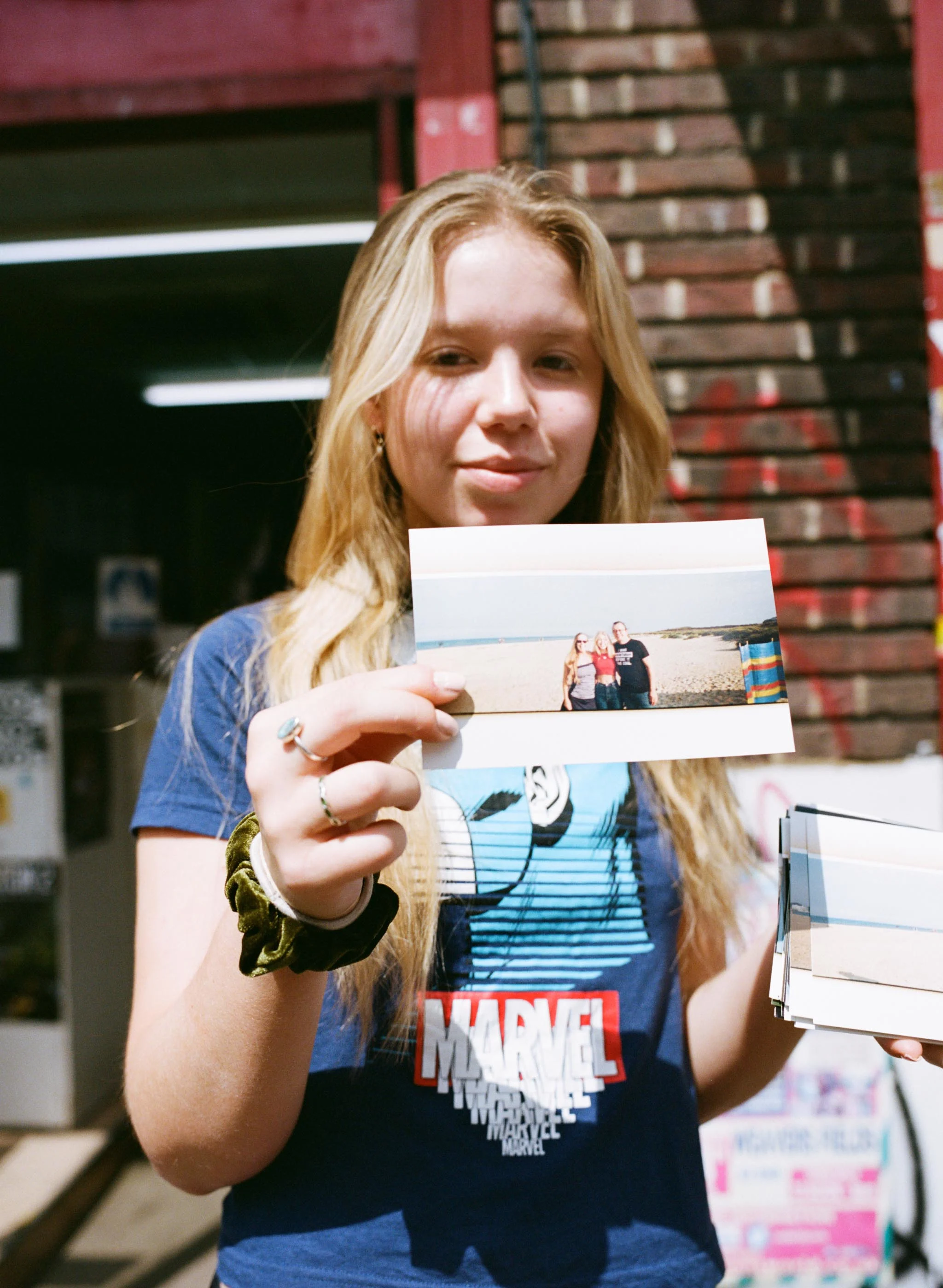
There’s excitement and build-up—something to wait for when we’ve become so used to everything being instantly there.
Through the years, Siddique has remained faithful to the magic of the film camera. And recently, he says, a new generation has come to value it too. “It’s not only that the quality of film is much better than on a standard digital camera,” he says. “The younger digital generation likes taking pictures with film because of the surprise they get when collecting or receiving their images. There’s excitement and build-up—something to wait for when we’ve become so used to everything being instantly there.”
As a family-run business in a city where most services seem either to have been consumed by chains and corporations, or be expensive and exclusive outfits, Eye Culture offers a degree of familiarity that can be hard to find elsewhere. Self-described “pro” labs often charge up to four times Siddique’s prices, and even the faceless high-street options tend to charge more for lower quality work. But Siddique operates with a different set of values. Rather than celebrating the fact that COVID-related supply-chain issues have depleted his stock of cheaper films, forcing customers to spend more on pricier options, he laments that some photographers are being forced to go without.
The way Nina Manandhar, a London-based photographer and tutor at Central Saint Martins, sees it, it’s Siddique’s outlook that makes Eye Culture so special. When she first moved to East London in 2008, she returned to shooting film after some time away.
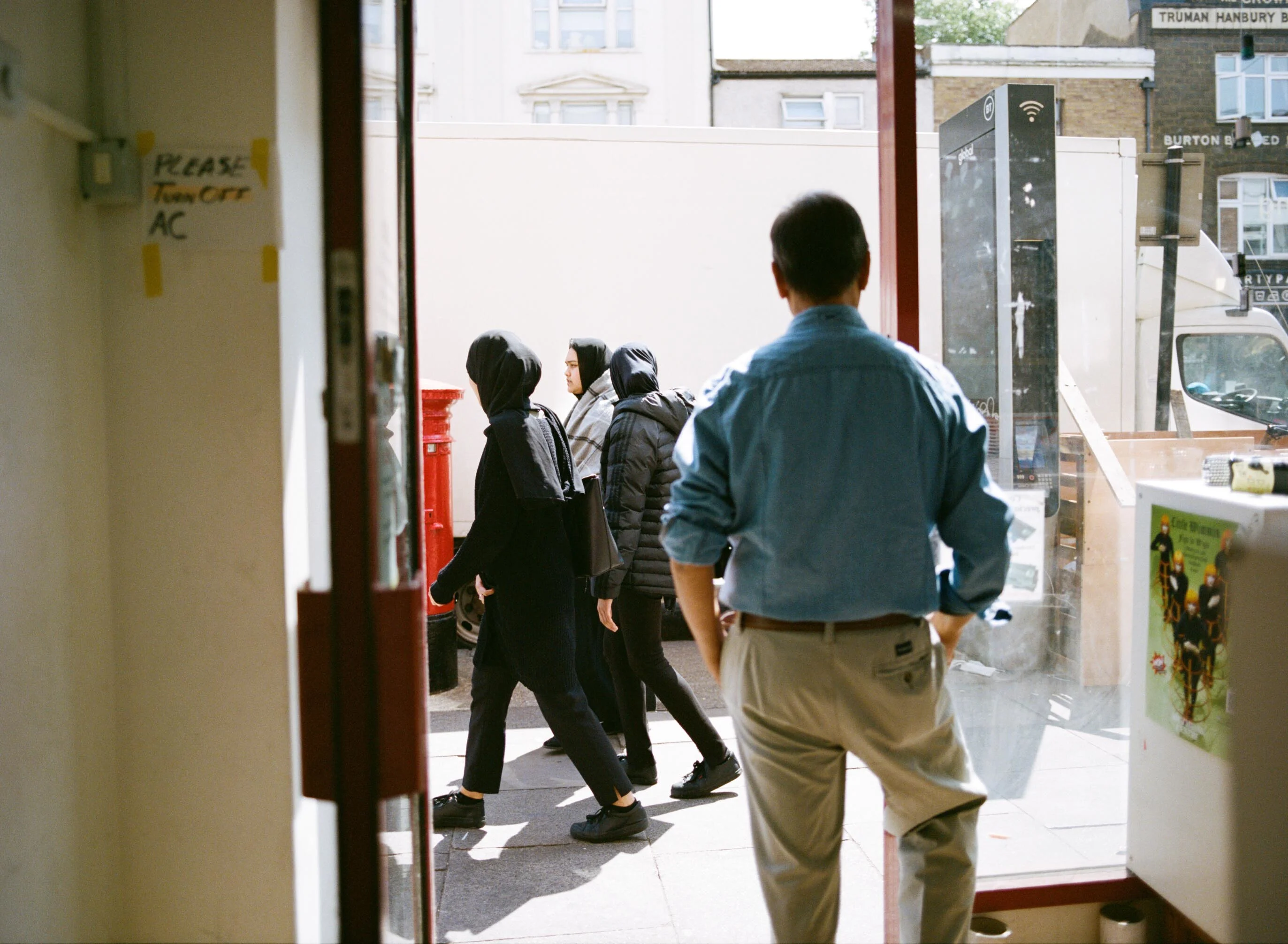
“I was shooting mostly street photography on 35mm film,” she says when we speak. “[I was] part of a group of independent photographers. Lots of us worked in studios on Hackney Road, just round the corner from Eye Culture, and we’d all head down there together as a group to develop our film.”
“Shooting film is about being more physical, creating something tangible,” she continues. “Eye Culture was, and is, an extension of this approach. We’d meet round there and talk about our projects; I remember Siddique organized events.”
Today, when students ask Manandhar where to develop film, she only has one suggestion. “There’s a reason Eye Culture has a cult status,” she says, “so I send them there.”
For decades, Siddique has worked tirelessly to build up Eye Culture into a much-loved focal point for London’s photographers. Now approaching his seventies, he is starting to think about his own future, too. “These days,” he says, “my wife Nasrin and my colleagues do all the scanning. My eyes just aren’t what they once were.”
Still, he remains ever-present. “When it’s your own business, it’s not easy to take time off. It’s rare we take holidays,” he says. “Everything here is very technical. If something goes wrong, we need to be around.”
Even keeping his kit ticking over is a challenging task. “They don’t make this equipment anymore,” he explains, “and even refurbished stuff is hard to come by. We have an engineer who does the servicing. But when he retires? I’m not sure what we’ll do.”
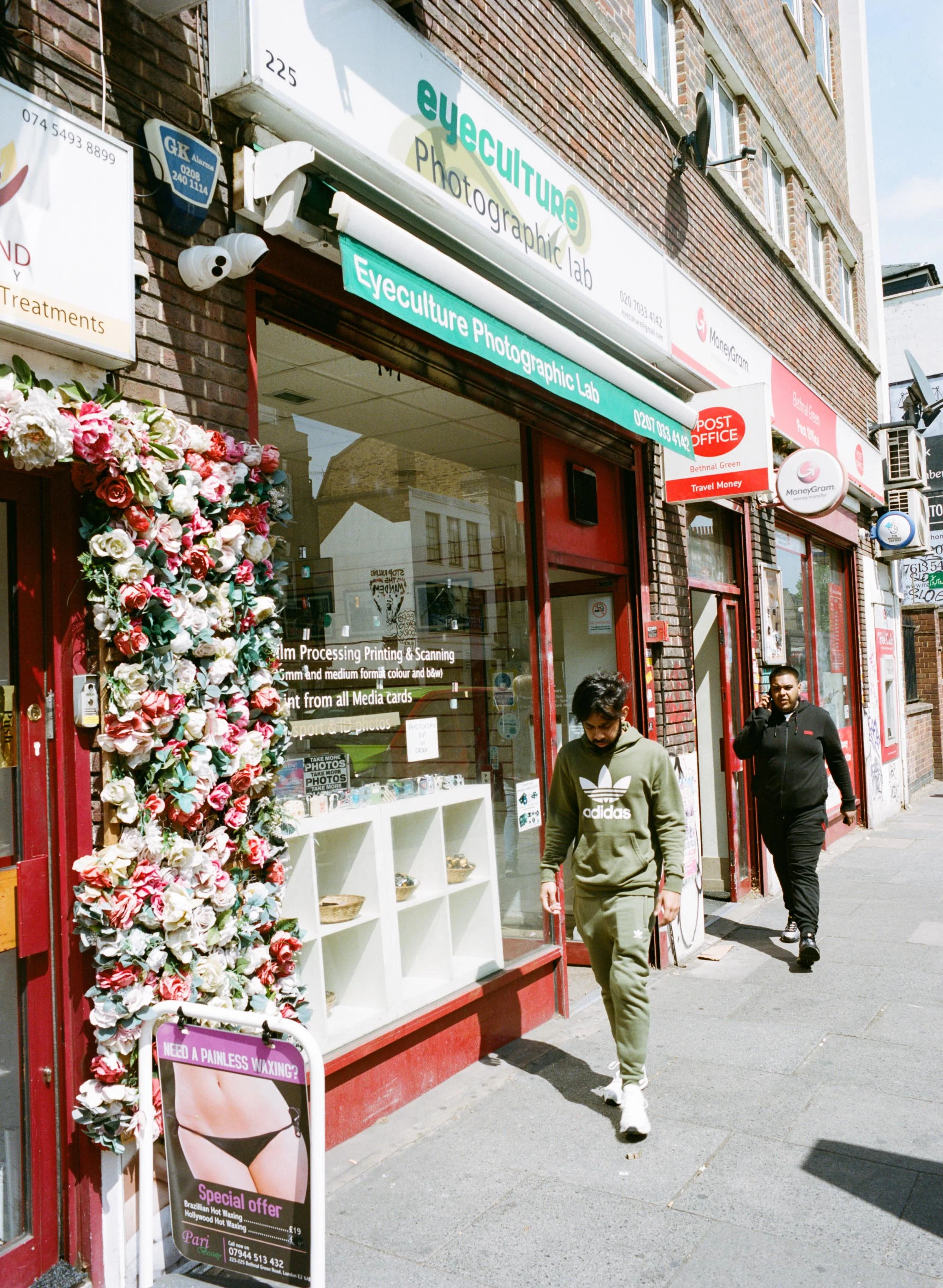
For now, though, the plan is very much to continue. “We’ll carry on here for as long as we can,” he says. “I don’t have kids to take over—it’s just me and my wife. Our success here is, really, down to her endless patience and hard work. We love what we do, otherwise we’d have closed up many years ago.”
Because, for Siddique, Eye Culture is far more than a business. It has been his way of supporting the creativity of an entire community for generations. When films are collected, his clientele often share their stories. It’s these that Siddique treasures most of all.
Just the other day, he recalls, a man came in with four rolls of film for him to develop. “When he picked them up,” says Siddique, “he stood at the counter with me and showed me the pictures. They were all from his childhood. He showed me the people in the photographs, and told me about all of them, many of whom had long since passed away.”
Occasionally, customers seem disappointed. “Not by our service,” Siddique is quick to make clear, “but by the pictures they’ve taken.” Again, they’ll stand at the counter. Keen to lift their spirits, he’ll offer advice.

“Maybe it’s about how they’ve loaded the film,” he says, “or their use of exposure, composition or ISO. I’ll show them what to do, and give them the tools they’ll need for next time.”
Siddique picks up an information sheet filled with tips he has created. He’ll offer these sheets out when someone needs a helping hand. “That’s exactly the reason I opened the doors in the first place,” he says. “Maybe I’ll make some YouTube videos, and put the sheets on the internet, if we ever close our doors.”
Sometimes, however, there’s no need for conversation. He’ll just stand quietly and watch as photographers collect their prints.
“I’ll never forget when we were on Fashion Street,” he says. “These two young girls came into the shop. They picked up their pictures, sat on the other side of the road, and flicked through them. They were smiling and laughing. They couldn’t stop giggling. And it still happens now—that’s the happiness we can impart.”

